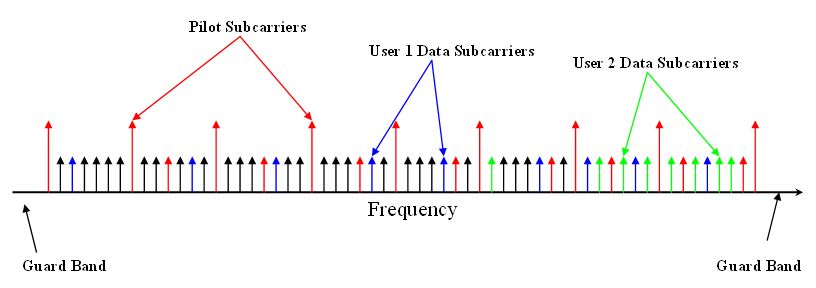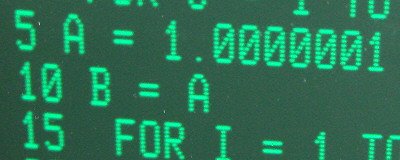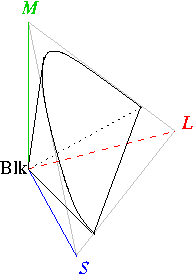|
PAL-M
PAL-M is the analogue TV system used in Brazil since 19 February 1972. At that time, Brazil was the first South American country to broadcast in colour. Colour TV broadcast began on 19 February 1972, when the TV networks Globo and Bandeirantes transmitted the Caxias do Sul Grape Festival. Transition from black and white to colour, however, was not complete until 1978. Two years later, in 1980, colour broadcast nationwide in Brazil was commonplace. It is unique among analogue TV systems in that it combines the 525-line 30 frames-per-second System M with the PAL colour encoding system (using very nearly the NTSC colour subcarrier frequency), unlike all other countries which pair PAL with 625-line systems and NTSC with 525-line systems. Origins NTSC being the "natural" choice for countries with monochrome standard M, the choice of a different colour system poses problems of incompatibility with available hardware and the need to develop new television sets and production hardwa ... [...More Info...] [...Related Items...] OR: [Wikipedia] [Google] [Baidu] |
CCIR System M
CCIR System M, sometimes called 525–line, monochrome NTSC or NTSC-M, is the analog broadcast television system approved by the FCC (upon recommendation by the National Television Systems Committee - NTSC) for use in the United States since July 1, 1941, replacing the 441-line TV system introduced in 1938. System M displays a total of 525 lines of video (with 480 carrying visible image information) at 30 frames per second using 6 MHz spacing between channel numbers, and is used for both VHF and UHF channels. It was also adopted in most of the Americas and Caribbean, South Korea, Taiwan and Japan (here with minor differences, informally referred to as ''System J)''. System M doesn't specify a color system, but NTSC (NTSC-M) was normally used, with some exceptions: NTSC-J in Japan, PAL-M in Brazil and SECAM-M on Cambodia and Vietnam (see ''Color standards'' section below). The letter M designation was attributed by the ITU on the 1961 Stockholm meeting (see ITU identif ... [...More Info...] [...Related Items...] OR: [Wikipedia] [Google] [Baidu] |
576i
576i is a standard-definition television, standard-definition digital video mode, originally used for digitizing analog television in most countries of the world where the utility frequency for electric power distribution is 50 Hz. Because of its close association with the legacy color encoding systems, it is often referred to as PAL, PAL/SECAM or SECAM when compared to its 60 Hz (typically, see PAL-M) NTSC-colour-encoded counterpart, 480i. The ''576'' identifies a vertical resolution of 576 lines, and the ''i'' identifies it as an Interlaced video, interlaced resolution. The field rate, which is 50 Hertz, Hz, is sometimes included when identifying the video mode, i.e. 576i50; another notation, endorsed by both the International Telecommunication Union in BT.601 and SMPTE in SMPTE 259M, includes the frame rate, as in 576i/25. Operation In analogue television, the full Raster scan, raster uses 625 lines, with 49 lines having no image content to allow time for cathode r ... [...More Info...] [...Related Items...] OR: [Wikipedia] [Google] [Baidu] |
Telefunken
Telefunken was a German radio and television apparatus company, founded in Berlin in 1903, as a joint venture of Siemens & Halske and the ''Allgemeine Elektrizitäts-Gesellschaft'' (AEG) ('General electricity company'). The name "Telefunken" appears in: * the product brand name "Telefunken"; * ''Gesellschaft für drahtlose Telegraphie m.b.H., System Telefunken'', founded 1903 in Berlin as a subsidiary of AEG and Siemens & Halske; * ''Telefunken, Gesellschaft für drahtlose Telegraphie m.b.H.'' (from 1923 to 1955 – since 1941 subsidiary of the AEG only); * ''Telefunken GmbH'' in 1955; * ''Telefunken Aktiengesellschaft (AG)'' in 1963; * Merger of AEG and Telefunken to form ''Allgemeine Elektrizitäts-Gesellschaft AEG-Telefunken'' (from 1967 to 1979); * AEG-TELEFUNKEN AG (from 1979 to 1985); * ''TELEFUNKEN Fernseh und Rundfunk GmbH'', Hanover (1972, subsidiary of AEG-TELEFUNKEN); * Telefunken electronic GmbH (a spin-off of AEG-Telefunken and DASA * the company (since 1992 ... [...More Info...] [...Related Items...] OR: [Wikipedia] [Google] [Baidu] |
NTSC
The first American standard for analog television broadcast was developed by National Television System Committee (NTSC)National Television System Committee (1951–1953), Report and Reports of Panel No. 11, 11-A, 12–19, with Some supplementary references cited in the Reports, and the Petition for adoption of transmission standards for color television before the Federal Communications Commission, n.p., 1953], 17 v. illus., diagrs., tables. 28 cm. LC Control No.:5402138Library of Congress Online Catalog/ref> in 1941. In 1961, it was assigned the designation CCIR System M, System M. In 1953, a second NTSC standard was adopted, which allowed for color television broadcast compatible with the existing stock of black-and-white receivers. It is one of three major color formats for analog television, the others being PAL and SECAM. NTSC color is usually associated with the System M. The only other broadcast television system to use NTSC color was the System J. Since the introdu ... [...More Info...] [...Related Items...] OR: [Wikipedia] [Google] [Baidu] |
Subcarrier
A subcarrier is a sideband of a radio frequency carrier wave, which is modulated to send additional information. Examples include the provision of colour in a black and white television system or the provision of stereo in a monophonic radio broadcast. There is no physical difference between a carrier and a subcarrier; the "sub" implies that it has been derived from a carrier, which has been amplitude modulated by a steady signal and has a constant frequency relation to it. FM stereo Stereo broadcasting is made possible by using a subcarrier on FM radio stations, which takes the left channel and "subtracts" the right channel from it — essentially by hooking up the right-channel wires backward (reversing polarity) and then joining left and reversed-right. The result is modulated with suppressed carrier AM, more correctly called sum and difference modulation or SDM, at 38 kHz in the FM signal, which is joined at 2% modulation with the mono left+right audio (which ran ... [...More Info...] [...Related Items...] OR: [Wikipedia] [Google] [Baidu] |
Raster Scan
A raster scan, or raster scanning, is the rectangular pattern of image capture and reconstruction in television. By analogy, the term is used for raster graphics, the pattern of image storage and transmission used in most computer bitmap image systems. The word ''wiktionary:raster, raster'' comes from the Latin word ''wiktionary:rastrum, rastrum'' (a rake), which is derived from ''wiktionary:radere, radere'' (to scrape); see also rastrum, an instrument for drawing musical staff lines. The pattern left by the lines of a rake, when drawn straight, resembles the parallel lines of a raster: this line-by-line scanning is what creates a raster. It is a systematic process of covering the area progressively, one line at a time. Although often a great deal faster, it is similar in the most general sense to how one's gaze travels when one reads lines of text. The data to be drawn is stored in an area of memory called the Framebuffer. This memory area holds the values for each pixel on the ... [...More Info...] [...Related Items...] OR: [Wikipedia] [Google] [Baidu] |
Bandwidth (signal Processing)
Bandwidth is the difference between the upper and lower frequencies in a continuous band of frequencies. It is typically measured in hertz, and depending on context, may specifically refer to ''passband bandwidth'' or ''baseband bandwidth''. Passband bandwidth is the difference between the upper and lower cutoff frequencies of, for example, a band-pass filter, a communication channel, or a signal spectrum. Baseband bandwidth applies to a low-pass filter or baseband signal; the bandwidth is equal to its upper cutoff frequency. Bandwidth in hertz is a central concept in many fields, including electronics, information theory, digital communications, radio communications, signal processing, and spectroscopy and is one of the determinants of the capacity of a given communication channel. A key characteristic of bandwidth is that any band of a given width can carry the same amount of information, regardless of where that band is located in the frequency spectrum. For example, a ... [...More Info...] [...Related Items...] OR: [Wikipedia] [Google] [Baidu] |
Video Bandwidth
In broadcast television systems, VF bandwidth, video bandwidth or more formally video frequency bandwidth is the range of frequencies between 0 and the highest frequency used to transmit a live television image. The maximum frequency can be found by multiplying three figures; the number of frames (images) per second, number of lines Line most often refers to: * Line (geometry), object with zero thickness and curvature that stretches to infinity * Telephone line, a single-user circuit on a telephone communication system Line, lines, The Line, or LINE may also refer to: Arts ... per frame and maximum number of sine periods per line. In the table below number of frames per second, number of lines per frame and the video band width in different systems are shown.''Reference Data for Radio Engineers'', Howard W.Sams Co., Inc, , sec. 30, p. 33 References {{Analogue TV transmitter topics Television technology Video formats History of television ... [...More Info...] [...Related Items...] OR: [Wikipedia] [Google] [Baidu] |
Gamma Correction
Gamma correction or gamma is a nonlinear operation used to encode and decode luminance or tristimulus values in video or still image systems. Gamma correction is, in the simplest cases, defined by the following power-law expression: : V_\text = A V_\text^\gamma, where the non-negative real input value V_\text is raised to the power \gamma and multiplied by the constant ''A'' to get the output value V_\text. In the common case of , inputs and outputs are typically in the range 0–1. A gamma value \gamma 1 is called a ''decoding gamma'', and the application of the expansive power-law nonlinearity is called gamma expansion. Explanation Gamma encoding of images is used to optimize the usage of bits when encoding an image, or bandwidth used to transport an image, by taking advantage of the non-linear manner in which humans perceive light and color. The human perception of brightness ( lightness), under common illumination conditions (neither pitch black nor blindingly bright), fol ... [...More Info...] [...Related Items...] OR: [Wikipedia] [Google] [Baidu] |
Field (video)
In video, a field is one of the many still images which are displayed sequentially to create the impression of motion on the screen. Two fields comprise one video frame. When the fields are displayed on a video monitor they are "interlaced" so that the content of one field will be used on all of the odd-numbered lines on the screen and the other field will be displayed on the even lines. Converting fields to a still frame image requires a process called deinterlacing, in which the missing lines are duplicated or interpolated to recreate the information that would have been contained in the discarded field. Since each field contains only half of the information of a full frame, however, deinterlaced images do not have the resolution of a full frame. In order to increase the resolution of video images, therefore, new schemes have been created that capture full-frame images for each frame. Video composed of such frames is called progressive scan video. Video shot with a standard vi ... [...More Info...] [...Related Items...] OR: [Wikipedia] [Google] [Baidu] |
Color Model
A color model is an abstract mathematical model describing the way colors can be represented as tuples of numbers, typically as three or four values or color components. When this model is associated with a precise description of how the components are to be interpreted (viewing conditions, etc.), taking account of visual perception, the resulting set of colors is called "color space." This article describes ways in which human color vision can be modeled, and discusses some of the models in common use. Tristimulus color space One can picture this space as a region in three-dimensional Euclidean space if one identifies the ''x'', ''y'', and ''z'' axes with the stimuli for the long-wavelength (''L''), medium-wavelength (''M''), and short-wavelength (''S'') light receptors. The origin, (''S'',''M'',''L'') = (0,0,0), corresponds to black. White has no definite position in this diagram; rather it is defined according to the color temperature or white balance as desired or ... [...More Info...] [...Related Items...] OR: [Wikipedia] [Google] [Baidu] |
Standard Illuminant
A standard illuminant is a theoretical source of visible light with a spectral power distribution that is published. Standard illuminants provide a basis for comparing images or colors recorded under different lighting. CIE illuminants The International Commission on Illumination (usually abbreviated CIE for its French name) is the body responsible for publishing all of the well-known standard illuminants. Each of these is known by a letter or by a letter-number combination. Illuminants A, B, and C were introduced in 1931, with the intention of respectively representing average incandescent light, direct sunlight, and average daylight. Illuminants D represent variations of daylight, illuminant E is the equal-energy illuminant, while illuminants F represent fluorescent lamps of various composition. There are instructions on how to experimentally produce light sources ("standard sources") corresponding to the older illuminants. For the relatively newer ones (such as series D), exp ... [...More Info...] [...Related Items...] OR: [Wikipedia] [Google] [Baidu] |




